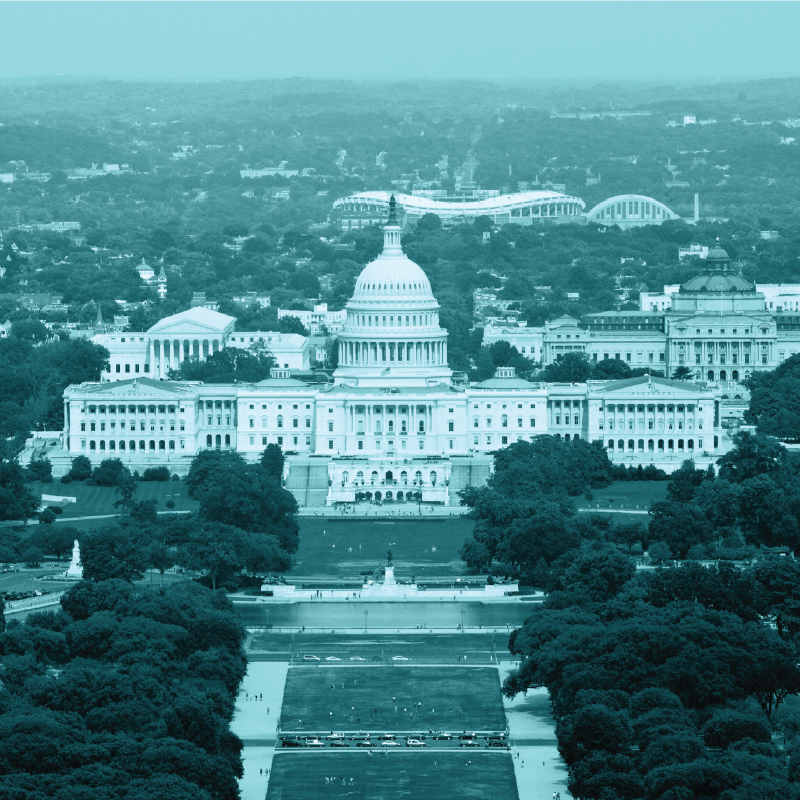The Next Threat to Education: Congress’ Budget Reconciliation
Here’s what families, advocates, and education leaders need to know — and what we can do about it
EdTrust in Texas advocates for an equitable education for Black and Latino students and students from low-income backgrounds across the state. We believe in centering the voices of Texas students and families as we work alongside them for the better future they deserve.
Our mission is to close the gaps in opportunity and achievement that disproportionately impact students who are the most underserved, with a particular focus on Black and Latino/a students and students from low-income backgrounds.
EdTrust–New York is a statewide education policy and advocacy organization focused first and foremost on doing right by New York’s children. Although many organizations speak up for the adults employed by schools and colleges, we advocate for students, especially those whose needs and potential are often overlooked.
EdTrust-Tennessee advocates for equitable education for historically-underserved students across the state. We believe in centering the voices of Tennessee students and families as we work alongside them for the future they deserve.
EdTrust–West is committed to dismantling the racial and economic barriers embedded in the California education system. Through our research and advocacy, EdTrust-West engages diverse communities dedicated to education equity and justice and increases political and public will to build an education system where students of color and multilingual learners, especially those experiencing poverty, will thrive.
The Education Trust in Louisiana works to promote educational equity for historically underserved students in the Louisiana’s schools. We work alongside students, families, and communities to build urgency and collective will for educational equity and justice.
EdTrust in Texas advocates for an equitable education for historically-underserved students across the state. We believe in centering the voices of Texas students and families as we work alongside them for the better future they deserve.
The Education Trust team in Massachusetts convenes and supports the Massachusetts Education Equity Partnership (MEEP), a collective effort of more than 20 social justice, civil rights and education organizations from across the Commonwealth working together to promote educational equity for historically underserved students in our state’s schools.
Here’s what families, advocates, and education leaders need to know — and what we can do about it

Updated May 30, 2025
Following the administration’s harmful decision to begin dismantling the U.S. Department of Education, Congress is now employing another tool to slash billions in critical education funding: budget reconciliation. Because the budget reconciliation process only requires a simple majority in both the House and Senate, the Republican majority in Congress can advance their policy agenda without bipartisan support — making it easier to push through deep cuts to education and critical programs that students and families depend on.
As Americans, we must voice our opposition to this Great American Heist that reduces and diverts money and supports from students and public education to fund tax cuts for the wealthy. Here’s what families, advocates, and education leaders need to know — and what we can do about it.
 Budget reconciliation is a legislative process that allows Congress to fast-track legislation related to federal spending, revenue, or the debt limit with simple majorities in both the House of Representatives and the Senate and without being subject to a filibuster. Republican leaders in both the House and Senate are using this process to advance sweeping legislation that would cut education funding and redirect public dollars to private interests, with long-term consequences for both P-12 and higher education.
Budget reconciliation is a legislative process that allows Congress to fast-track legislation related to federal spending, revenue, or the debt limit with simple majorities in both the House of Representatives and the Senate and without being subject to a filibuster. Republican leaders in both the House and Senate are using this process to advance sweeping legislation that would cut education funding and redirect public dollars to private interests, with long-term consequences for both P-12 and higher education.
Contact your members of Congress regarding budget reconciliation: Use this tool to send a letter or call or set up a meeting with your representatives. Urge them to reject the reconciliation bill and tell them about:
Make the stakes clear with your state and local networks. The impact of these proposals won’t be felt in Washington—they’ll be felt in classrooms, homes, and communities. That’s why it’s so important to amplify local voices and perspectives during this critical window. Help expand the reach of this message by working with partners and community leaders to:
 Congress is using budget reconciliation to create a federal voucher tax credit for individuals and who donate to scholarship-granting organizations that pay for private school tuition and homeschooling. While it’s being framed as “school choice,” this is a backdoor federal school voucher program. This plan would accelerate the privatization of public education at the federal level — for the first time in history — and would disproportionately harm students from low-income communities, rural communities, and communities of color who rely on well-resourced public schools.
Congress is using budget reconciliation to create a federal voucher tax credit for individuals and who donate to scholarship-granting organizations that pay for private school tuition and homeschooling. While it’s being framed as “school choice,” this is a backdoor federal school voucher program. This plan would accelerate the privatization of public education at the federal level — for the first time in history — and would disproportionately harm students from low-income communities, rural communities, and communities of color who rely on well-resourced public schools.
Congress has simultaneously advanced cuts to SNAP and Medicaid, threatening food security and healthcare access for millions of students and jeopardizing their physical, mental, and academic well-being. This is the Great American Heist: providing tax breaks to the wealthy and diverting public funds into private institutions, while cutting critical services that support all communities.
Congress has included the Educational Choice for Children Act (ECCA) in the bill. This would provide a 100% federal tax credit to individuals who donate to private scholarship-granting organizations. The proposal would divert $20 billion in taxpayer money to private schools and families who homeschool. This bill would create a national school voucher program, expanding school vouchers to states whose voters have already rejected them.
The proposal also creates a one-of-a-kind tax shelter for wealthy donors and would result in losses in federal and state tax revenue.
Vouchers and other privatization programs hurt student outcomes and undermine access to a high-quality education for the vast majority of students.
Passing this bill would:
Congress has proposed nearly $300 billion in cuts to the Supplemental Nutrition Assistance Program (SNAP), which supports sustainable nutrition access for low-income families.
SNAP reduces food insecurity, leading to improved health outcomes, lower overall healthcare expenses, decreased absenteeism due to illness, and thus improved academic outcomes. SNAP enrollment also facilitates access to free and reduced-price meals in school and summer food benefits for students.
An estimated 4 million children could lose SNAP benefits, and 18.3 million students could lose access to free meals in schools. This bill would exacerbate food insecurity in and out of school and jeopardize students’ physical, mental, and academic well-being.
Cuts to SNAP would also have a devastating impact on college students. In 2020 alone, 3.8 million college students — nearly 1 in 4 — reported experiencing food insecurity.
Congress has proposed over $700 billion in cuts to Medicaid, which provides healthcare coverage to more than 70 million people, including 40% of all children—nearly 30 million children.
Medicaid is also one of the largest funding streams for K-12 education in our country. Each year, Medicaid provides $7.5 billion dollars to schools for school-based health services.
The bill’s Medicaid and Affordable Care Act cuts would result in around 14 million people losing health insurance, severely impacting low-income families, people with disabilities, and millions of children.
In addition to losing access to health care outside of school, children—especially those with disabilities or from low-income backgrounds—could lose access to the critical school-based health services they need to excel academically, such as physical and speech therapy, mental health counseling, and assistive medical and educational technology.
 Congress has also proposed significant rollbacks to college affordability programs and borrower protections for students, including cuts in essential financial aid and costlier student loans. This bill would make it harder for students to access, afford, and complete college — particularly first-generation students, students of color, and those already burdened by debt.
Congress has also proposed significant rollbacks to college affordability programs and borrower protections for students, including cuts in essential financial aid and costlier student loans. This bill would make it harder for students to access, afford, and complete college — particularly first-generation students, students of color, and those already burdened by debt.
The bill would make cuts to Pell Grants, which help students from low-income backgrounds afford college. The bill makes changes to eligibility requirements, increasing the number of credits students must take to be considered a “full-time student” and eliminating funding for students who are enrolled less than half-time.
These cuts to Pell Grants will impact 2 out of 3 Pell Grant recipients, or 4.4 million students. Around 3 million students will see a nearly $1,500 decrease annually in their maximum award due to changes to the definition of full-time enrollment, and 1.4 million students will lose their Pell Grant funding entirely due to the limitations for students who are enrolled less than half-time. Working and caregiving students, students with disabilities, and incarcerated students, would be hit the hardest by these changes.
The bill eliminates subsidized loans for low-income undergraduate students, which prevent interest from accruing while students are in school.
For graduate students, the bill imposes new limits on unsubsidized loans and terminates the GradPLUS loan program, which helps cover graduate education expenses not covered by other financial aid.
This bill would increase borrowing costs for low-income students and make it harder to access and afford higher education.
In the 2023-24 academic year, 4.2 million undergraduate students benefited from subsidized loans. When loan programs are capped or eliminated, students, especially students from low-income backgrounds, might be unable to afford to further their education or be driven toward the private loan market and predatory lenders.
The bill eliminates regulations, such as the Borrower Defense to Repayment, Gainful Employment, and Closed School Discharge rules, that protect borrowers from repaying loans to institutions that have deceived or misled them, failed to prepare students for gainful employment, or closed suddenly.
Students will be more vulnerable to fraud, misrepresentation, and abuse, if regulations that protect borrowers from predatory institutions are eliminated. Students who attend a school that closes suddenly are less likely to complete their degree, yet because of this bill, they would remain saddled with debt.
The bill would eliminate all existing income-driven repayment plans for new borrowers and offer them the Repayment Assistance Plan (RAP). This plan imposes a new formula for repayment and eliminates the “income protection allowance” which protects a portion of a borrower’s income to ensure they can cover their basic needs.
Borrowers would be required to make higher monthly payments and be in debt for longer, pushing more borrowers into default. The elimination of the “income protection allowance” means low-income borrowers, including those with incomes below the federal poverty level, will be required to make unaffordable monthly payments—sacrificing covering their basic needs—or fall into delinquency and default.
